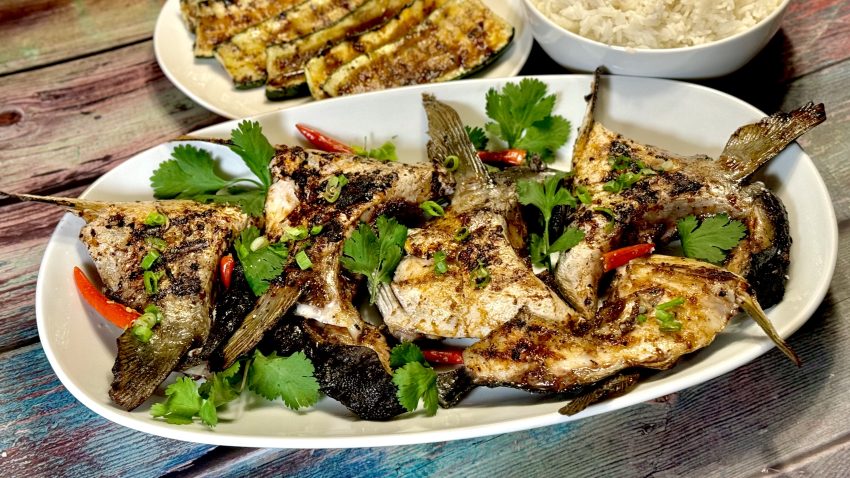An absolute fish collar convert here.
The amount of flesh in a collar is comparable to that of a filet but the texture of it is that of a cheek. Yes, there are bones to work around.
Sometime ago, I read about Asian proclivity to and mastery with bones. A FaceTime chat with my daughter in China showed it can be contagious.
Exact 12-hour time difference between New Jersey and Beijing conveniently connected my very early mornings and Lizzie’s late lunches. One day she was on my assignment at a little but unforgettable place in Beijing hutongs to take pictures of the dumpling menu. There was my child in my pitch black 4 AM bedroom on a bright screen flipping through the menu, chatting about things, and casually chopsticking a dish of Chongqing chicken, the real one — bones, gristle, and all. She would pop a piece into her mouth, elegantly move it around, and almost Maggie Cheung style pick an absolutely clean bone with chopsticks from her mouth and place it onto her plate. I forgot about my dumpling menu and was watching this movie wishing it would never end.
My chopstick skills are ok but need practice. When hungry, I use them as a shovel according to the observation of my classmate years ago. In a few shoves, I now can take control over the excitement and proceed with the classic hold. At this point, I can bring food with chopsticks to my mouth. But pick the bones out and place them on a plate? Elegantly? No. There are hands for that.
Anyway, my daughter and our chat made me a bone convert. There is more sense in bones like in many other Asian ways about food I’ve learned about over the last year. Bones not only add more flavor, they slow down the moment which is quite good for the body and mind.
With that, my Chongqing Chicken changed, so did my Gong Bao, steamed fish, beef and pork soups. Now, I am progressing to fish collars.
These yellowtail ones we put on the grill slathering them yakitori-way with the reduction of soy sauce, honey, mirin, garlic, ginger, lemon juice, and sesame oil.

